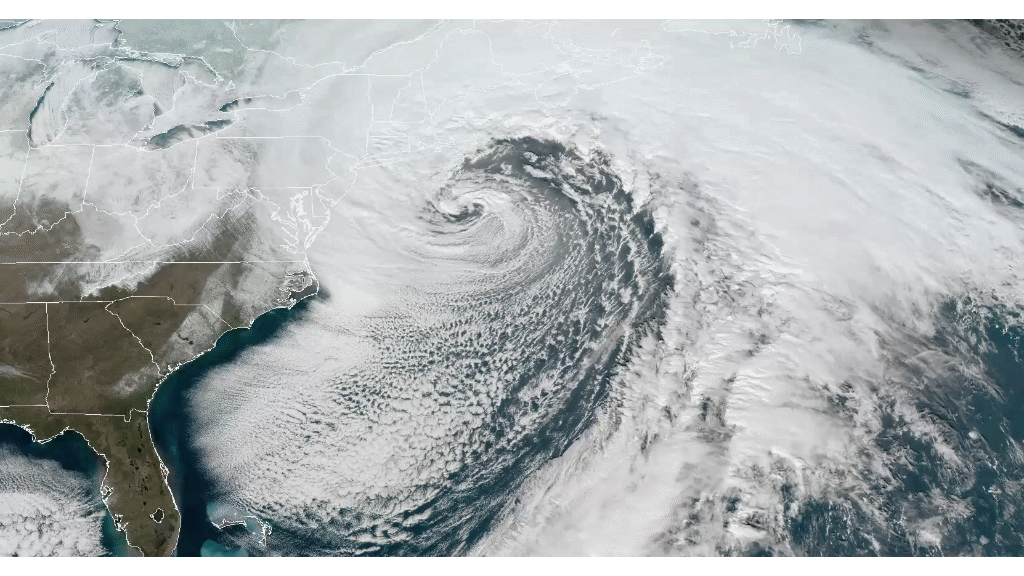What is a "Meteorological Bomb"?
by David Moran, on Jan 4, 2018 2:12:03 PM
Some storm systems can develop rapidly, sometimes over the span of hours or a day. When this happens, the system can be very intense and cause a wide variety of impacts. Storms that intensify very quickly are called "bomb cyclones", "meteorological bombs", or "bombs".
So, what causes these bombs to develop? To initiate the development, there needs to be a large temperature gradient (change in pressure over a finite distance). A typical scenario in which this may occur is when warm air over the ocean interacts with the colder continental air. With strong forcing in place, the air at the center of the storm rises rapidly, causing a rapid decrease in pressure.
The most likely time of year for these storms to form is between October and March. Development of these systems is commonly referred to as "bombogenesis" or "explosive cyclogenesis" and is characterized by a 24 millibar drop in pressure over a 24 hour period. While not especially common, some notable examples of bombs include the Superstorm of 1993 that brought feet of snow to the Northeast, Hurricane Sandy in 2012, and Hurricane Irma in 2017. Keep in mind, however, that while I mentioned hurricanes, this system is not a hurricane. A low that is not tropical in nature can also undergo bombogenesis.
The Nor'easter ongoing across the Northeast is associated with an area of low pressure that 'bombed out' over the Atlantic Ocean. Yesterday afternoon, the central pressure was 1000 mb; twelve hours later, the central pressure was 972 mb. This is more than double the threshold used in the definition of a bomb. Below is a satellite loop showing the evolution of the low.
 GOES 16 Loop of Nor'Easter
GOES 16 Loop of Nor'Easter
Impacts from the storm will continue through Friday. Snow amounts will range from 2-4 inches across portions of New York and Pennsylvania to as much as 20 inches across portions of Maine. In addition to the snow, winds as high as 40-50 mph with higher gusts will allow for wind chills as low as -15°F to -25°F in some places and visibilities less than 1/4 mile. Coastal flooding and numerous power outages are currently being reported. Most of the snow should move out of the Northeast by late Friday.







